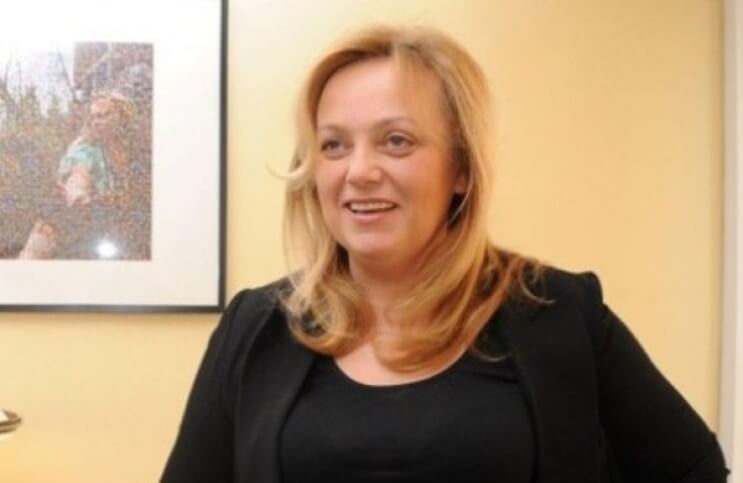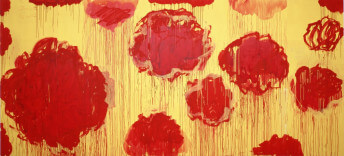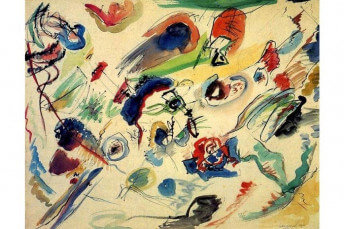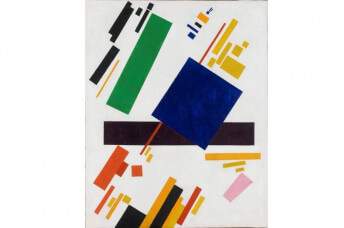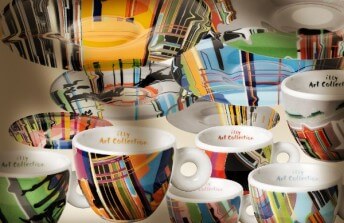Who is Olga Uskova, the Owner of the Future Museum of Russian Abstract Art in Moscow?
Sep 4, 2017
Soon there will be a new art museum opening in Moscow, which will feature work from mid-20th Century Russian abstract artists associated with an avant-garde movement called The New Reality. The works will largely come from the collection of Olga Uskova, a Russian businesswoman. So who, you might be wondering, is Olga Uskova, and what was The New Reality? Those are good questions. But like so many other things concerning Russia, the answers are complicated, and might in the end only lead to more questions.
The New Reality
This is the easy part. The New reality was a school founded by the Russian painter Ely Bielutin in 1948. It was an avant-garde art academy that encouraged abstraction and the expression of emotion. Painters associated with The New Reality gained a great deal of public attention during a period known as The Thaw, when for a short time in the Mid-20th Century the Soviet government was open to more liberalism in the arts. But in 1962, Nikita Khrushchev lashed out against an exhibition of the work of New Reality artists, a move that signaled the end of The Thaw. These artists thus lived the rest of their lives in relative obscurity. They continued making art but made little money for their work. Now for the other question: Who is Olga Uskova? Officially, Uskova is the founder and president of a Russian IT company called Cognitive Technologies. Since 1992, the company has played a central role in the Russian development of artificial intelligence. Uskova worked closely with Vladimir Putin the first time he was President of Russia then also worked with his successor, Dmitry Medvedev. Today her company leads the way in the Russian development of autonomous vehicles and agricultural robots. As could be imagined, as the founder and president of a successful IT company she has become wealthy. And one of the things she has spent her money on is her collection of Russian art, part of which she intends to exhibit in her soon-to-be-opened museum in Moscow.
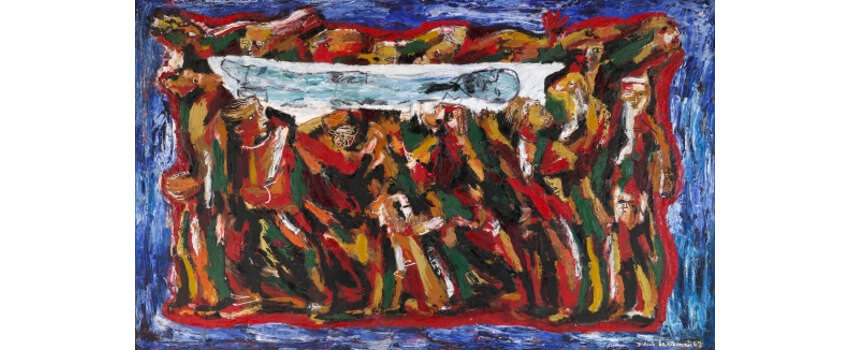 Ely Bielutin - Requiem, 1962, Oil on canvas, 244 ? 410 sm, The State Tretyakov Gallery
Ely Bielutin - Requiem, 1962, Oil on canvas, 244 ? 410 sm, The State Tretyakov Gallery
About That Collection
According to The Art Newspaper, the bulk of the work Uskova intends to show in her museum was acquired in 2012, when she purchased what she describes as “the collection and vast archive of Samvel Oganesyan, which included abstract work made in the 1950s.” Following this acquisition, she infused $4.5 million into the creation of the Russian Abstract Art Foundation in order to promote works from the collection, which have since been exhibited at state museums in Moscow and St. Petersburg, and are next scheduled to travel to an exhibition in Atlanta, Georgia, where the curators will attempt to contextualize them alongside works from American artists from the same period. After that, they will travel to a show in China. But here is where I get confused. I cannot find any evidence of a Russian art collector named Samvel Oganesyan. I was able to find a photograph of a man named Oganesyan Samvel Aykazovich, who died in 2013 and who was evidently an art historian. In the photograph, he is seated next to guess who: Ely Bielutin, founder of The New Reality. Is it funny that all of the painters Uskova is promoting in conjunction with her forthcoming museum were students of Bielutin, and that Bielutin died in 2012, the same year Uskova acquired the collection of the mysterious art collector Samvel Oganesyan who does not seem to exist, but yet someone with almost the same name was evidently a good friend of Ely Bielutin?
The Plot Thickens
When Ely Bielutin died, he left behind an art collection worth $2 billion, which included works by Michelangelo, Leonardo, Van Dyck, El Greco, and dozens of other masters. Immediately following his death, his widow bequeathed the entire collection to Vladimir Putin, without asking for, nor receiving, a single dollar in exchange. Following this phenomenally generous act, journalists have delved deeper into the origin story of the Bielutin collection. Bielutin claimed his grandfather started the collection in 1870 intending to start a museum. But in 1919, the Bolsheviks forced him to give up his home. So he allegedly hid the entire art collection in the attic of his soon-to-be abandoned home, where it remained, undiscovered, until Ely Bielutin and his wife somehow managed to reoccupy the apartment four decades later. Russian journalists have been unable to find any records matching the name of the grandfather who supposedly started the collection. Meanwhile, Poland and Lithuania have both alleged that many of the works in the collection were looted by Germans in World War II, and looted again by Russians after the war. Is it possible that with the Bielutin collection under scrutiny in 2012, his widow found a way for some of the works to find their way to his friend, Oganesyan Samvel Aykazovich? Is it possible what Olga Uskova bought in 2012, including so many wonderful works created by the students of Ely Bielutin, is actually part of the collection Bielutin left behind?
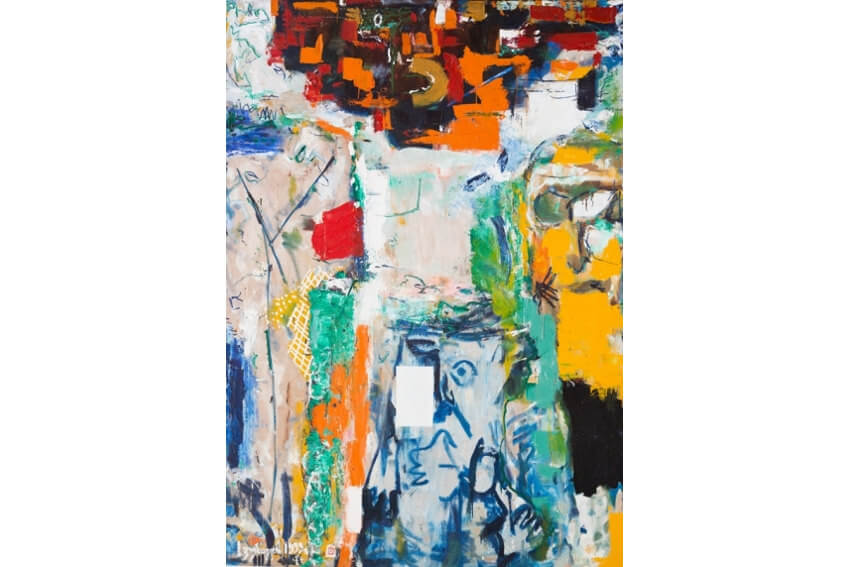 Vladislav Zubarev - Cathedral Revolt, 1999, Abstract Art Foundation
Vladislav Zubarev - Cathedral Revolt, 1999, Abstract Art Foundation
Who Cares?
Maybe Olga Uskova, the widow of Ely Bielutin, Oganesyan Samvel Aykazovich and Vladimir Putin are all somehow in cahoots. Or maybe people are just being conspiratorial. Really, in the end, does it matter? The point is that because of this new museum, which is being created through the money and efforts of Olga Uskova, the whole world will soon be able to appreciate the work of Russian avant-garde artists that previously have not gotten their due. That is the amazing thing about this story. These were artists who had their destiny snatched away from them mid-career. They did not make a living from their work. They were denied recognition by the government, and yet they continued to paint in total obscurity. Their paintings should be celebrated. They are, as Uskova points out, “messages…from people who lived exclusively for the sake of art.”
Featured image: Olga Uskova - portrait
All images © 2017 | ZRIMO art foundation, all images used for illustrative purposes only
By Phillip Barcio
